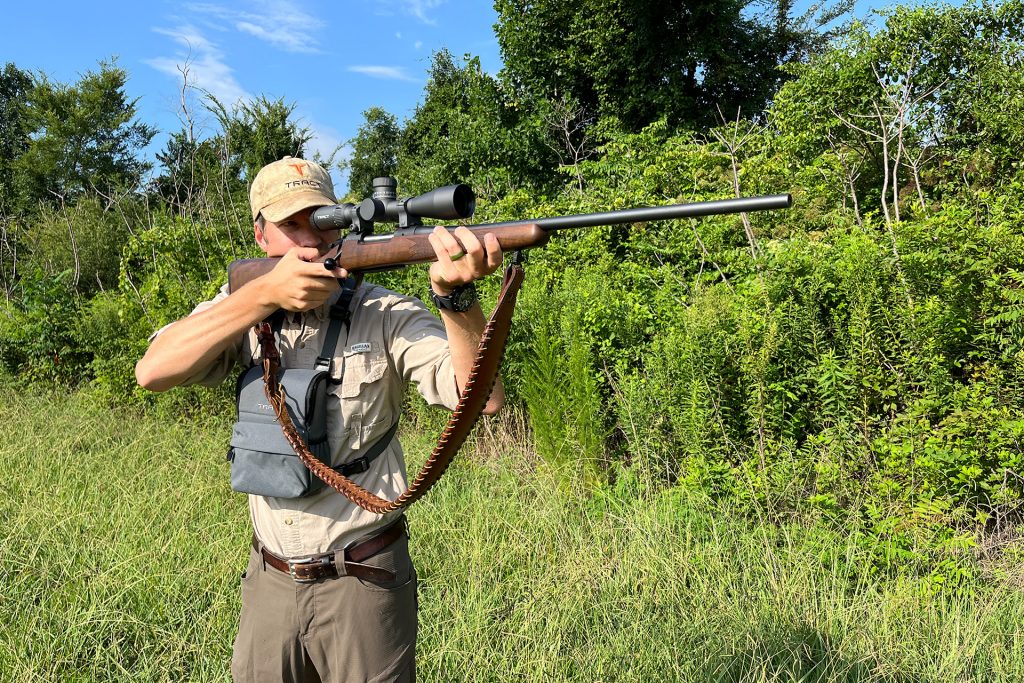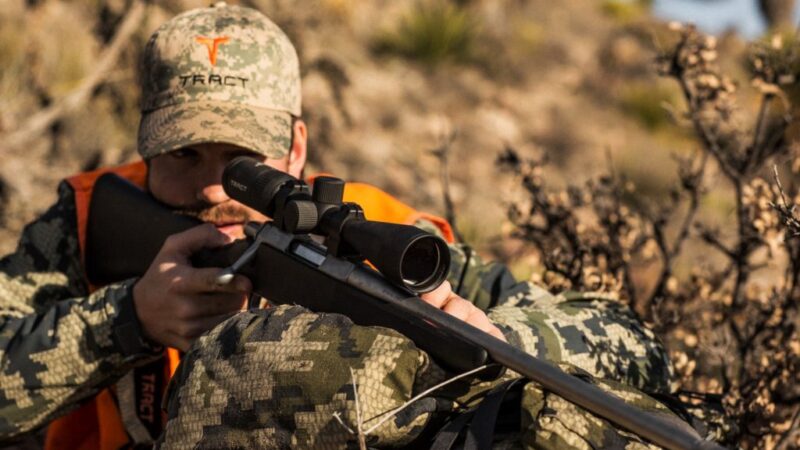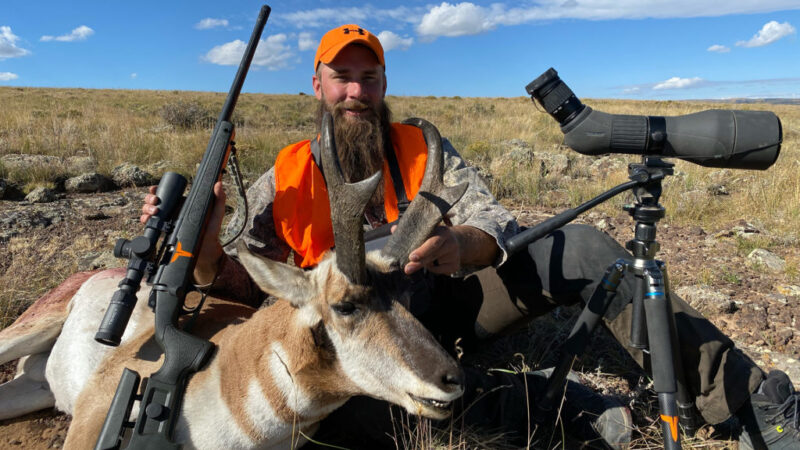Quickly Acquiring Close-Range Targets
Quickly acquiring close-range targets can be challenging; make sure you’re properly equipped with the right rifle and scope and these tips to help you out.
This past fall, I was hunting deer during the peak of the rut. Movement had been slow and my excitement for the rut was slowly turning stale. Out of nowhere, a tall 8-point trotted right under my stand hot after a doe with his nose to the ground. In hindsight, I would have been more successful with a slingshot, but this time I completely flubbed the shot – a clear miss.
Long-range and extreme long-range (ELR) shooters get all the glory. But in reality, most shooters will be more likely to need to take a shot at an extremely close range than an extreme long range. While most hunters won’t need to take a shot at five feet, many rifle hunters find themselves in a position where they need to quickly take a shot at ranges within 100 yards. Whether it’s because the target is unexpectedly close or you need to take down a fast-moving animal, acquiring a close-range target and making an appropriate hold can be challenging. We’ll discuss what you need to be properly equipped for the job.
Tips For Quickly Acquiring Close-Range Targets
There were a couple reasons why I missed that buck. For starters, earlier in the hunt, I had shouldered my rifle and zoomed the scope all the way in to gauge a deer at the other end of a long field. This in itself is a detriment as I should have been and now do always carry binoculars. I had forgotten to zoom it back out and had trouble finding the vitals in my scope when I took my shot. I panicked, and I’m sure that compounded other problems like jerking the trigger.
Make sure your scope’s magnification is always around mid zoom when sitting stand. This will allow you to quickly zoom out or in depending on the animal’s range. Oftentimes, when quickly acquiring close-range targets, mid zoom will work well for the shot, especially if the animal is moving and requires more field of view.
A smaller caliber rifle is ideal to reduce recoil for quicker follow-up shots.
I was also completely unprepared mentally to have a buck pass so close. In my mind, I had envisioned shooting a deer across the field and had dummy-practiced it multiple times in the stand. With so much talk centered around long-range and extreme long-range shooting (ELR), we often forget that close shots can happen.
Use the Right Rifle
In most cases, closer shots when hunting will occur in thicker cover or more broken terrain. The type of rifle needed for climbing steep hills and trudging through woods will look and act very differently than one used to shoot 1,000 yards.
A rifle with a shorter barrel will be much easier to maneuver through brush. Likewise, the lighter weight will be less burdensome to carry up and down broken terrain. Since anticipated shots are closer, a shooter doesn’t need to worry as much about their round carrying as much energy downrange.
A smaller caliber rifle would be ideal to reduce felt recoil and allow for quicker follow-up shots. A .243 Win. still carries almost 1,700 ft-lbs of energy out to 100 yards – more than the recommended 1,500 ft-lbs to take down an elk. While a .243 Win. might ultimately be an extreme example and, therefore, a little light for elk hunting, lighter calibers are more than capable when shooting at close range. Medium-sized calibers, like the 6.5 Creedmoor, deliver a whopping 2,600 ft-lbs of energy at 100 yards – plenty for any hoofed game in North America outside of Bison.
Short-action rifles would also provide an advantage in the same scenario. Magnum-length actions take significantly longer to manipulate, and in dark timber, nanoseconds matter greatly. Shooters could also consider a faster action altogether. Semi-automatic and lever action rifles shine at close range. The shooter can acquire the target, shoot, and cycle the action without ever taking the rifle off their shoulder or their eye off the game.
Use the Right Scope
The shooter’s choice of sighting system will also play a role in quickly acquiring a close-range target. Iron sights offer a unique advantage. The shooter can keep his or her eyes on the game and use their peripheral vision to see their point of aim. While that is also possible with a scope, no scope will offer the field of view of a naked eye.
Target acquisition is faster with iron sights than with optics, but if the shooter moves even slightly, their point of aim will move as well. Plainly put, while iron sights have their purpose in the field, they are much less precise than optics.
Scopes that are good at close-range typically have a wide field of view. In many close-range situations, the minimum magnification should be no greater than 4x. Though, a 1x or 3x minimum magnification is ideal. Low variable power optic (LVPO) scopes are perfect for this application. Regardless of the chosen scope, the shooter should always remember to zoom their scope all the way out to its widest setting before entering a situation in wooded or close terrain.
Unlike long-range shots, bullet drop and wind drift are not relevant to close-range opportunities. BDC reticles and large adjustable turrets are not necessary and will not be used in close applications. The added etching on the inside of a long-range scope can actually hinder target acquisition. Instead, shooters should choose reticles with thin lines to prevent blocking part of the sight picture.
The Illuminated T-Plex Dot in the TORIC 2.5-15×44 30mm Hunt Series is a perfect reticle for quickly acquiring close range targets.
Reticles are another consideration. Second Focal Plane (SFP) reticles will remain the same size regardless of magnification. Whereas First Focal Plane (FFP) reticles will look larger if the scope is zoomed in and may also block more of the sight picture than the shooter desires; another good reason to keep your rifle scope at mid zoom during sits.
If you find yourself in situations where close-range shots are the norm, it’s important to have a rifle and scope combination that can perform well at those distances. By having a handy, quick rifle and choosing a scope with good low-power capabilities, as well as remaining alert, you’ll be prepared for whatever comes your way.













